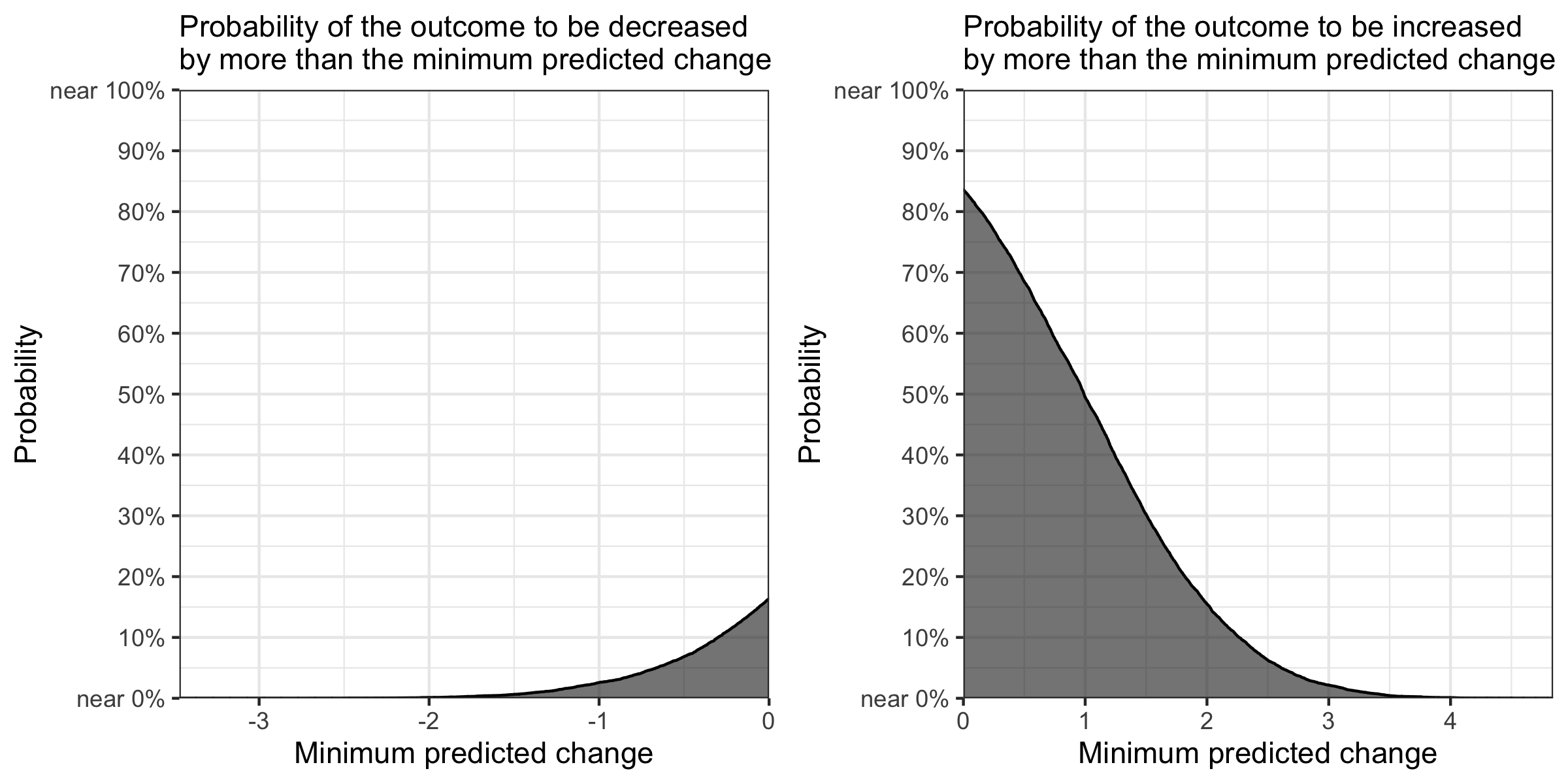How should social scientists understand and communicate the uncertainty of statistically estimated causal effects? It is well-known that the conventional significance-vs.-insignificance approach is associated with misunderstandings and misuses. Behavioral research suggests people understand uncertainty more appropriately in a numerical, continuous scale than in a verbal, discrete scale. Motivated by these backgrounds, I propose presenting the probabilities of different effect sizes. Probability is an intuitive continuous measure of uncertainty. It allows researchers to better understand and communicate the uncertainty of statistically estimated effects. In addition, my approach needs no decision threshold for an uncertainty measure or an effect size, unlike the conventional approaches, allowing researchers to be agnostic about a decision threshold such as p<5\% and a justification for that. I apply my approach to a previous social scientific study, showing it enables richer inference than the significance-vs.-insignificance approach taken by the original study. The accompanying R package makes my approach easy to implement.
翻译:社会科学家应如何理解和交流统计估计因果关系的不确定性?众所周知,传统意义-无足轻重的方法与误解和滥用有关。行为研究表明,人们比口头的、离散的尺度更恰当地理解数字和连续规模的不确定性。受这些背景的驱使,我提议提出不同影响大小的概率。概率是一种直观的、持续的不确定性测量方法。它使研究人员能够更好地了解和交流统计估计效应的不确定性。此外,与传统方法不同,我的方法不需要为不确定性衡量尺度或影响大小设定任何决定门槛,使研究人员能够对诸如p<5 ⁇ 等决定阈值及其理由具有不可知性。我对以前的社会科学研究采用我的方法,表明它比原始研究采用的意义-V.-无足可言的方法更能推断。随附的R包使我的方法更容易实施。








